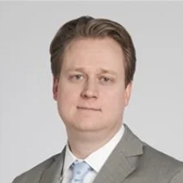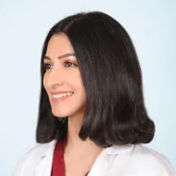Interviews With Leaders in CV Imaging: Paul Cremer, MD

Paul Cremer, MD
Anam Waheed, MD, a fellow in training (FIT) at Brigham and Women's Hospital in Boston, MA, spoke with Paul Cremer, MD, imaging cardiologist, associate director of the Cardiac Intensive Care Unit and associate director of the Cardiovascular Medicine Training Program in the Robert and Suzanne Tomsich Department of Cardiovascular Medicine at Cleveland Clinic, OH, about the practice of cardiovascular imaging and advice for FITs and Early Career professionals pursuing cardiovascular imaging.
The field of cardiovascular imaging has rapidly evolved over the last decade and is now recognized as a sub-specialty within cardiovascular medicine. How did you become interested in it?
The appeal of multimodality imaging was about being a diagnostician and enjoying seeing a breadth of disease and pathology. In a lot of ways, multimodality cardiac imaging is an extension of this and sort of a "stethoscope on steroids." More importantly, it satisfies me to figure out the best way to answer the patient's question, accurately diagnose their condition and help them manage it.
Cardiovascular imaging is a broad field with a wide range of practices. How do you practice cardiovascular imaging?
I am an imaging cardiologist with advanced training in echocardiography, cardiac computed tomography (CT), MRI, nuclear cardiology and structural imaging. I practice cardiovascular imaging in a way that integrates imaging into patient care. I see patients one day a week in an outpatient cardiology clinic and have one day dedicated to research. In addition, I interpret cardiac CT, nuclear cardiology and echocardiographic studies. I also attend in the Cardiac Care Unit (CCU) for my in-service time where I care for critically ill patients and teach trainees. I believe that by combining the knowledge of cardiovascular imaging and clinical cardiology skills, one may provide patients with more accurate diagnoses and a more personalized treatment plan.
How do you incorporate multimodality imaging into your clinical practice in clinic and in the CCU?
Rapidly and accurately securing the correct diagnosis is one of the most important things you can do for patient care and imaging is a key factor. Imaging can also identify patients who are at risk for complications, guide treatment decisions and monitor patients' response to treatment over time.
When I evaluate patients, I always start by looking at the electrocardiogram, chest x-ray, echocardiogram, cardiac CT, coronary angiogram, nuclear imaging and/or cardiac MRI. I do this without knowing the patient's clinical history. This helps me avoid bias and focus on the objective findings. Once I have reviewed the imaging data, I then review the patient's story, examination and chart.
What advice do you have for those pursuing a career in cardiovascular imaging?
Everyone must find the right balance between their interests and what is important to their career. Many of us enjoy imaging because it exposes us to a wide range of pathologies. In general, I believe it is a good idea to train broadly and be exposed to all modalities in general fellowship and imaging fellowship.
How would you like to see the field of cardiovascular imaging advance in the next decade?
We are becoming increasingly proficient in determining which test is the best option for a patient's situation which is a key skill for multimodality imagers. There is a real need for individuals who understand the strengths and weaknesses of each modality in very specific clinical settings. I believe that we need more of this integration across modalities as the number of options and patient complexity both continue to grow.

This article was authored by Anam Waheed, MD, a FIT at Brigham and Women's Hospital in Boston, MA.
This content was developed independently from the content developed for ACC.org. This content was not reviewed by the American College of Cardiology (ACC) for medical accuracy and the content is provided on an "as is" basis. Inclusion on ACC.org does not constitute a guarantee or endorsement by the ACC and ACC makes no warranty that the content is accurate, complete or error-free. The content is not a substitute for personalized medical advice and is not intended to be used as the sole basis for making individualized medical or health-related decisions. Statements or opinions expressed in this content reflect the views of the authors and do not reflect the official policy of ACC.

